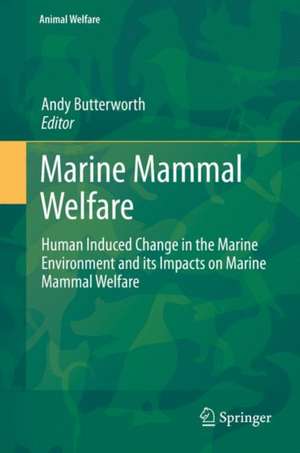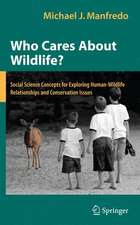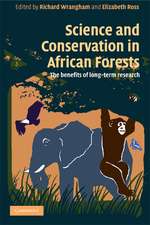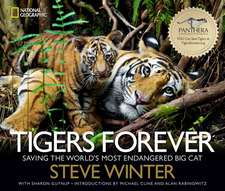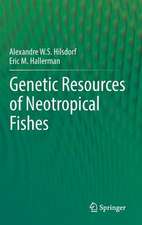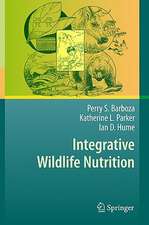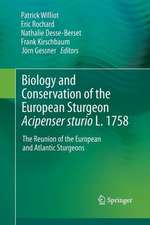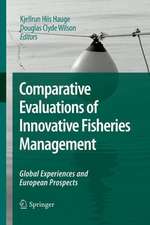Marine Mammal Welfare: Human Induced Change in the Marine Environment and its Impacts on Marine Mammal Welfare: Animal Welfare, cartea 17
Editat de Andy Butterworthen Limba Engleză Hardback – 7 iul 2017
| Toate formatele și edițiile | Preț | Express |
|---|---|---|
| Paperback (1) | 876.72 lei 38-44 zile | |
| Springer International Publishing – 14 aug 2018 | 876.72 lei 38-44 zile | |
| Hardback (1) | 1301.35 lei 38-44 zile | |
| Springer International Publishing – 7 iul 2017 | 1301.35 lei 38-44 zile |
Din seria Animal Welfare
- 18%
 Preț: 953.65 lei
Preț: 953.65 lei - 5%
 Preț: 1192.87 lei
Preț: 1192.87 lei - 18%
 Preț: 996.78 lei
Preț: 996.78 lei - 18%
 Preț: 935.53 lei
Preț: 935.53 lei - 18%
 Preț: 1379.84 lei
Preț: 1379.84 lei - 15%
 Preț: 695.34 lei
Preț: 695.34 lei - 18%
 Preț: 991.86 lei
Preț: 991.86 lei - 18%
 Preț: 1104.88 lei
Preț: 1104.88 lei - 15%
 Preț: 646.62 lei
Preț: 646.62 lei - 18%
 Preț: 943.25 lei
Preț: 943.25 lei - 18%
 Preț: 782.42 lei
Preț: 782.42 lei - 18%
 Preț: 953.65 lei
Preț: 953.65 lei - 18%
 Preț: 740.25 lei
Preț: 740.25 lei - 5%
 Preț: 1029.35 lei
Preț: 1029.35 lei - 5%
 Preț: 837.13 lei
Preț: 837.13 lei - 5%
 Preț: 910.65 lei
Preț: 910.65 lei - 5%
 Preț: 1107.77 lei
Preț: 1107.77 lei - 5%
 Preț: 1606.66 lei
Preț: 1606.66 lei - 18%
 Preț: 950.52 lei
Preț: 950.52 lei - 18%
 Preț: 1225.48 lei
Preț: 1225.48 lei - 18%
 Preț: 1392.46 lei
Preț: 1392.46 lei - 18%
 Preț: 1226.11 lei
Preț: 1226.11 lei - 18%
 Preț: 947.98 lei
Preț: 947.98 lei - 18%
 Preț: 1217.90 lei
Preț: 1217.90 lei - 15%
 Preț: 360.54 lei
Preț: 360.54 lei -
 Preț: 389.36 lei
Preț: 389.36 lei
Preț: 1301.35 lei
Preț vechi: 1690.06 lei
-23% Nou
Puncte Express: 1952
Preț estimativ în valută:
249.02€ • 260.65$ • 207.26£
249.02€ • 260.65$ • 207.26£
Carte tipărită la comandă
Livrare economică 26 martie-01 aprilie
Preluare comenzi: 021 569.72.76
Specificații
ISBN-13: 9783319469935
ISBN-10: 3319469932
Pagini: 625
Ilustrații: XXVI, 625 p. 153 illus., 144 illus. in color.
Dimensiuni: 155 x 235 x 32 mm
Greutate: 0.9 kg
Ediția:1st ed. 2017
Editura: Springer International Publishing
Colecția Springer
Seria Animal Welfare
Locul publicării:Cham, Switzerland
ISBN-10: 3319469932
Pagini: 625
Ilustrații: XXVI, 625 p. 153 illus., 144 illus. in color.
Dimensiuni: 155 x 235 x 32 mm
Greutate: 0.9 kg
Ediția:1st ed. 2017
Editura: Springer International Publishing
Colecția Springer
Seria Animal Welfare
Locul publicării:Cham, Switzerland
Cuprins
1. Preface.- 2. Introduction to marine mammal welfare.- 3. Cetacea – whales, dolphins, porpoises.- 3.1 The welfare effects of marine debris and fishery equipment on Cetacea, entanglement, toxicity – and of marine pollution including oil.- 3.2 Bycatch.- 3.3 Welfare impact of loss of habitat, changes in distribution and feeding and reproductive behaviours, and disturbances to migration.- 3.4 The welfare effects on Cetacean of human interactions – noise, boats, exploration, dredging, wind farms, whale watching, hunting.- 3.5 Noise in the ocean.- 3.5 Global climate effects on cetacean welfare.- 3.6 Social change in Cetacean populations resulting from human influences.- 3.7 Cetacea in captivity.- 3.8 Assessing the welfare of Cetacea – outcome based assessment methods in the wild and in captivity.- 4. Pinnipeds – seals, sea lions, fur seals, walrus.- 4.1 The welfare effects on Pinnipeds of marine debris and fisheries equipment, entanglement, toxicity – and of marine pollution includingoil.- 4.2 Bycatch.- 4.3 Interactions with farmed fisheries.- 4.4 Welfare impacts of loss of habitat, human induced changes in distribution and feeding and reproductive behaviours, and disturbances to behaviours and social dynamics of Pinnipeds.- 4.5 The welfare effects on Pinnipeds of human interactions – tourism, hunting.- 4.6 Glob
al climate effects on Pinniped welfare.- 4.7 Social change in Pinniped populations resulting from human influences.- 4.8 Pinnipeds in captivity.- 4.9 Assessing the welfare of Pinnipeds – in the wild and in captivity.- 5. Sirenia – dugongs and manatees.- 5.1 The welfare effects of human interactions on Manatees and Dugongs – boats, boat strikes, tourism, noise, the coastline as a recreational zone.- 5.2 The welfare effects on Sirenia of marine debris and fisheries equipment, entanglement, toxicity.- 5.3 Welfare impacts of loss of habitat, human induced changes in distribution and feeding and reproductive behaviours, and disturbances to behaviours and social dynamics of Sirenia.- 5.4 Social change in Sirenian populations resulting from human influences.- 5.5 Global climate effects on Sirenian welfare.- 5.6 Sirenia in captivity.- 5.7 Assessing the welfare of Sirenia – in the wild and in captivity.- 6. Ursidae - polar bears.- 6.1 The welfare effects of human interactions – human food and human waste, proximity to habitation, living together with polar bears.- 6.2 The welfare effects on Polar Bears of marine debris, fisheries equipment, entanglement, toxicity.- 6.3 Welfare impacts of loss of habitat, human induced changes in distribution and feeding and reproductive behaviours, and disturbances to behaviours and social dynamics of Polar Bears.- 6.4 Social change in Polar Bear populations resulting from human influences.- 6.5 Global climate effects on Polar Bear welfare.- 6.6 Hunting of Polar Bears.- 6.7 Polar Bears in captivity.- 6.8 Assessing the welfare of Polar Bears – in the wild and in captivity.- 7. Lutrinae – otters.- 7.1 The welfare effects of human interactions on otters – dogs, disturbance, fishing.- 7.2 The welfare effects on Otters of water borne debris, fisheries equipment, entanglement, toxicity.- 7.3 Welfare impacts of loss of habitat, human induced changes in distribution and feeding and reproductive behaviours, and disturbances to behaviours and social dynamics of Otters.- 7.4 Social change in Otters populations resulting from human influences.- 7.5 Global climate effects on Otter welfare.- 7.6 Hunting of Otters.- 7.7 Otters in captivity.- 7.8 Assessing the welfare of Otters – in the wild and in captivity.- 8. Conclusions.- 9. References.Recenzii
“The figures and photographs are well designed and informative, and the literature citations for those wishing to learn more are extensive and current. This text will be an indispensable resource for anyone interested in marine mammal welfare. … Recommended. Upper-division undergraduates through faculty and professionals.” (S. R. Fegley, Choice, Vol. 55 (11), July, 2018)
Notă biografică
Dr Andy Butterworth MRCVS is Reader in Animal Science and Policy in the Clinical Veterinary School, University of Bristol, UK. Andy teaches and carries out research in the areas of animal disease and production, animal welfare and legislation, behavioural biology, and animal welfare assessment in both farm and wild animals. He is a member of the European Food Standards Agency Scientific Panel on Animal health and Welfare, and chairs the EEER (Ethics, Economics, Education and Regulation) of the Farm Animal Welfare committee in the UK. He lectures widely and publishes in books, and the academic and trade press, with over 200 publications to date.
Textul de pe ultima copertă
Marine mammals are intriguing to many –they attract both positive and destructive attention from mankind. There are many forces operating to affect adversely the lives of whales, seals, manatees, otters and polar bears – and this book explores how the welfare of marine mammals has been affected and how they have adapted, moved, responded and sometimes suffered as a result of the changing marine and human world around them. Marine mammal welfare addresses the welfare effects of marine debris, of human traffic in the oceans, of noise, of hunting, of whale watching and tourism, and of some of the less obvious impacts on marine mammals – on their social structures, on their behaviours and migration, and also of the effects on captivity for animals kept in zoos and aquaria. There is much to think and talk about – how marine mammals respond in a world dramatically influenced by man, how are their social structures affected and how is their welfare impacted?
Caracteristici
Can we understand, and try to balance, the needs and welfare of marine mammals with human use of the marine and coastal environment? Hunting marine mammals – profit, versus protection, versus profligacy – in the long term which will rule? The politics of marine mammals - why are marine mammals and their welfare becoming more visible and important to the public, and as a significant topic in the political arena?
